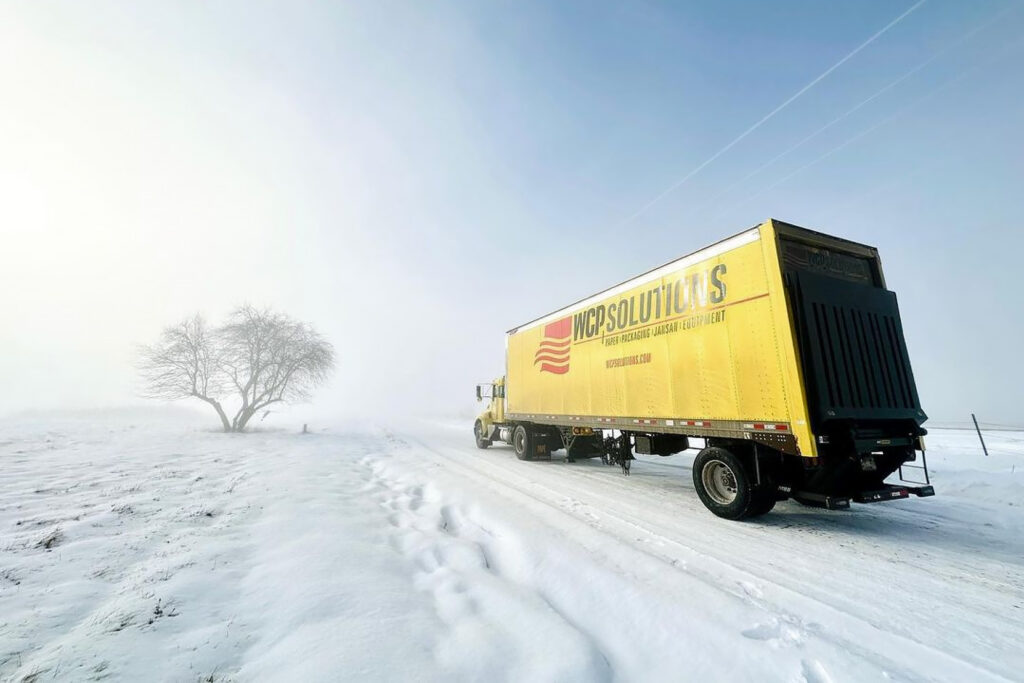Compostable vs Recycled – Foodservice Products

What’s the difference?
You just polished off a delicious breakfast sandwich, a to-go container of fresh fruit, and a hot cup of coffee. Since you’re an environmentally conscious person, you head to the kitchen to dispose of your containers, but you find a recycle bin, garbage bin, and another bin that you don’t even recognize. What do you do? How can you be expected to save the planet with all of these confusing disposal options?
As companies, especially in the foodservice industry, aim to be more socially responsible with disposal of their materials, it’s important to educate people on the difference between compostable and recycled products. Below, we’ll dive into what defines “compostable”, “recycled”, and a few of the common myths and facts that our foodservice specialists commonly encounter here at WCP Solutions.
What is Compostable?
Compostable means that “a product is capable of disintegrating into natural elements in a compost environment, leaving no toxicity in the soil”. When you think of “Compostable”, imagine something breaking down so that it’s healthy for the worms in the dirt.
What is Recycled?
Recycled is “the action or process of converting waste into reusable material”. Recycling is “reusing” one material for another. It’s important that the recycling process (whether it’s plastic or other) maintains strict guidelines so the cycle isn’t tainted with other materials.
Common Myths & Facts our Foodservice Customers should know
- Myth – Compostable products are recyclable.Wrong! Compostable products will contaminate the recycling stream because compostable products are not made up of a polymer material. A polymer is a material that recyclers want as it can be repurposed. Since recycling is a business, when a load is contaminated with non-polymer material, it makes it difficult for recyclers to sell. When the load is rejected, it ends up in the landfill even if some or most of the material can be recycled.
- Fact – Biodegradable and compostable are not the same thing.
Biodegradation is a natural process that happens through water, sunlight, heat, or a chemical process. The biodegradation process can take days to 100’s of years depending on the environment. Composting, on the other hand, is done under a specific process and specific environmental conditions, such as with heat, moisture, and natural microorganisms. The composting process usually happens within 180 days or less. - Myth – Compostable products will still compost in the landfill.
Wrong! A landfill is an anaerobic environment, which means, it lacks oxygen that is necessary for the composting process. Compostable products take heat and moisture to compost, but landfills are packed too tight, removing the oxygen from the environment. So instead, food will remain often intact and will not breakdown. Instead, it begins letting off methane gas which is extremely bad for the environment, causing greenhouse gases. - Fact – The #1 most recycled item in the USA is Steel/Aluminum.
- Fact – Almost half of the food produced in the US ends up in a landfill (Yikes!).
The EPA estimates that more food reaches landfills than any other single-use material in everyday trash. In fact, food makes up more than 22% of what you will find in a landfill. - Fact – Plastic products that have food contamination cannot be recycled.
Recyclers only want clean products that will compete with the clean product market. Not all recyclers have the ability to wash and clean the product before selling the material so most of the time those products end up in the landfill. - Fact – Products can only be recycled a few times.
A product can only be recycled and reused about 2-3 times before the quality is no good and cannot be reused. This is due to the polymers that make up the product, get shorter and harder to bind with one another each time they are repurposed so virgin material is added to help produce the product. - Myth – Hot cups are recyclable.
Wrong! Hot cups have a thin layer of plastic on the inside that act as a moisture barrier for the paper. It takes special recycling equipment to remove the thin plastic layer from the paper, so the paper can be recycled. Many recyclers do not have this capability, or it is too costly, so these items often end up in a landfill. - Fact – The codes on the bottom of plastic products are called ‘Resin identification codes’.
These were created by the plastics industry to denote which plastics the product is made of and help people identify correctly coded products. Most recyclable products are coded #1, #2, #5 and #6, where compostable products are labeled #7. Not all plastics are considered recyclable due to their chemical make-up and the ability to be reused. It’s important to check with your local hauler to determine their accepted plastics. - Fact – Not all plastics are recyclable!
Recycle codes #1 PET and #2 HDPE are the most frequently accepted curbside recycled products. They are made by a mold blowing process. Plastics coded #3-#6 are usually made in an injection mold or stamping process and often involves additives to make. For example, #3 PVC is a soft flexible plastic used to make things like food wrap or plastic piping. It contains numerous toxins and requires virgin material for construction so less than 1% is accepted or recycled.
Learn more about WCP’s Foodservice supplies and products here.

